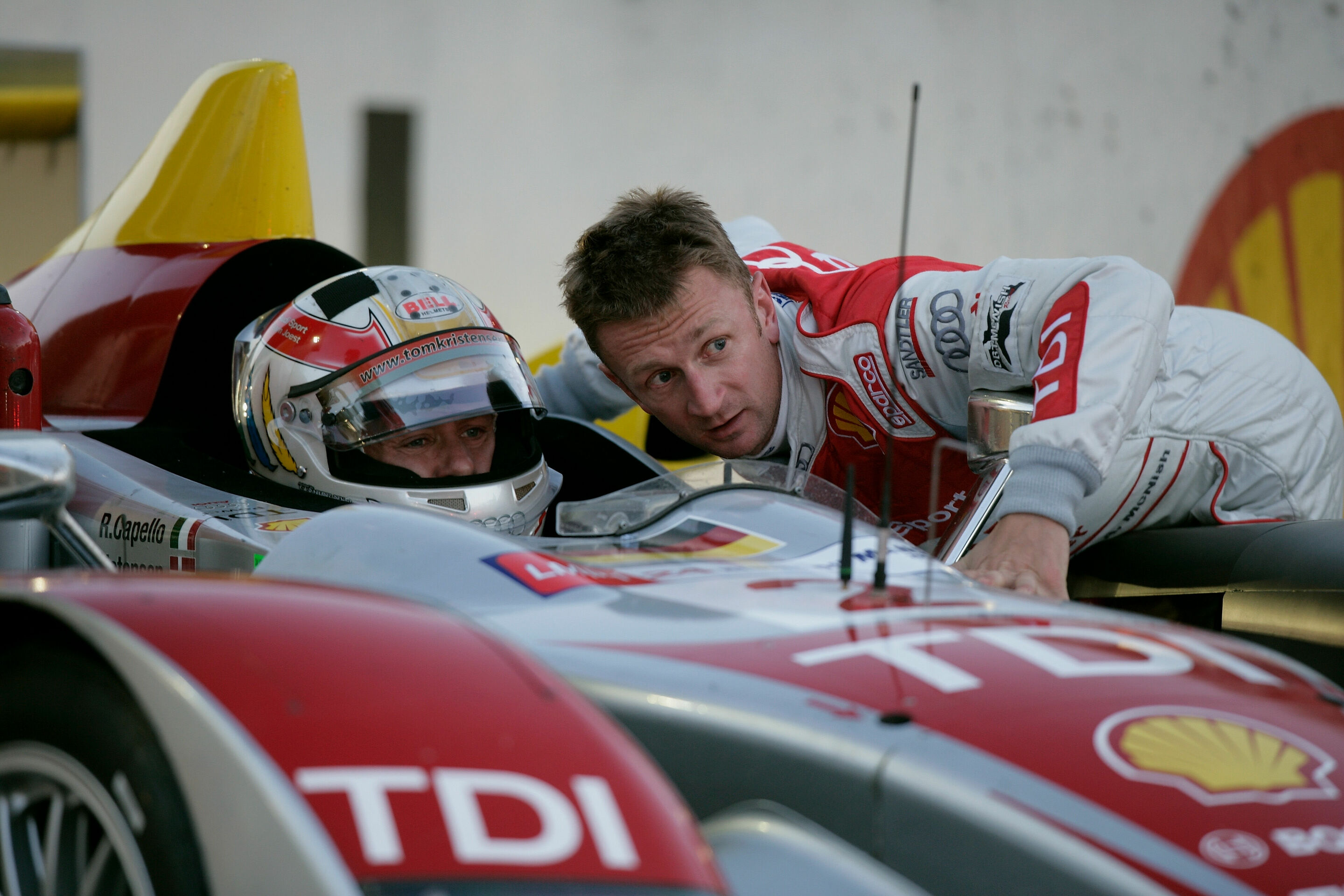Audi driver Allan McNish on Le Mans
- Balance between differing technical set-ups required
- Porsche Curves and Ford chicane are the most demanding parts
- Fans can feel the speed of 320 kph in Indianapolis corner
The 13.629 kilometre track of the Le Mans 24 Hour race is something special for every driver. The mix of public roads and a permanent race track, very slow corners and a share of more than 70 per cent of full throttle per lap, as well as day and night fascinate both drivers and the audience. Audi driver Allan McNish explains why.
Why do you think Le Mans is such a unique track?
“Le Mans is a special place for a driver, for a manufacturer and for a spectator. The length and the high average speed of the circuit makes it very unique which requires a delicate balance between aerodynamic downforce and drag. And also from a driving point of view it requires aggressive but controlled driving style.”
The track is a mixture of mainly temporary circuit sections and a permanent track. How does this affect the race?
“You feel that it is a mix between a permanent road course and a standard road for two reasons: one is that the grip level changes when you go between the two. The other thing is that on a standard road, there are small tracks where the trucks have been driving up and down every other day of the year. In that respect, you have to be aware of it. It doesn’t cause problems, but you’ve got to be aware of it.”
Do you feel that the track is much different at night when compared to the day?
“To be honest, I don’t find the circuit very much different at night than at day. It is very fast and demanding in both. In comparison, Sebring is much harder at night than Le Mans.”
Which are the most difficult corners of the track?
“For different reasons, but generally most people would say the Porsche Curves because they’re very very fast. The line is very narrow. If you make a very small mistake it has big consequences. But also, the Ford Chicance I think is not easy. It’s a slow corner, but it is easy to try and attack too much, especially at the end of a qualifying lap when you can lose so much time there just by being one metre too late on the brakes.”
From which perspective would you follow the race if you were a spectator?
“Probably from Eurosport sitting at home! Seriously: If I was a spectator, I think one of the best parts of Le Mans is the fact that you can go and see the cars at so many different points. You’re not restricted to one area. If you want to see a racing car at speed in real performance, then look at the entrance to Indianapolis and down to Arnage, here the cars come in at more than 320 kph, braking hard into a left-hand bend, a small acceleration, and then stopping basically at 60 to 70 kph before accelerating hard out again. It’s a hard part for the driver, but as a spectator, you really get a feel for the demands of a circuit but also for the speed of the cars. I’ve got a small agreement with a very good friend of mine that in five or six years, when we have probably finished driving, we both bring our little sons and sit on the other side and enjoy the relaxation side of Le Mans as a spectator. That’s something that I really look in a bizarre way forward to, but we’ve got this year’s 24 hours first.”
